Darjeeling known as the "Queen of the Hills", a Himalayan town in the Indian state of West Bengal, is internationally renowned as a tourist destination and also for its tea industry and the Darjeeling Himalayan Railway, a UNESCO World Heritage Site. It is very popular hill station in India. It is the headquarters of Darjeeling district. The town is located in the Mahabharat Range or Lesser Himalaya at an average elevation of 6,710 ft (2,050 m).
The development of the town dates back to the mid-19th century, when the British set up a sanatorium and a military depot. Subsequently, extensive tea plantation was done in the region, and tea growers developed distinctive hybrids of black tea and created new fermenting techniques. The resultant distinctive Darjeeling tea is internationally recognised and ranks among the most popular of the black teas. The Darjeeling Himalayan Railway connects the town with the plains and has one of the few steam locomotives still in service in India. Darjeeling also has several British-style public schools, which attract students from throughout India and neighbouring countries. The town, with its neighbouring town of Kalimpong, was a center for the demand of the Gorkhaland movement in the 1980s. The present movement for a separate state of Gorkhaland is also centered in Darjeeling town. In recent years, the town's fragile ecology has been threatened by a rising demand for environmental resources, stemming from growing tourist traffic and poorly planned urbanisation.
The development of the town dates back to the mid-19th century, when the British set up a sanatorium and a military depot. Subsequently, extensive tea plantation was done in the region, and tea growers developed distinctive hybrids of black tea and created new fermenting techniques. The resultant distinctive Darjeeling tea is internationally recognised and ranks among the most popular of the black teas. The Darjeeling Himalayan Railway connects the town with the plains and has one of the few steam locomotives still in service in India. Darjeeling also has several British-style public schools, which attract students from throughout India and neighbouring countries. The town, with its neighbouring town of Kalimpong, was a center for the demand of the Gorkhaland movement in the 1980s. The present movement for a separate state of Gorkhaland is also centered in Darjeeling town. In recent years, the town's fragile ecology has been threatened by a rising demand for environmental resources, stemming from growing tourist traffic and poorly planned urbanisation.
How to Reach Darjeeling
By Road: Darjeeling is well connected by road. The most convinient way to reach Darjeeling by road is via Siliguri. Road distance between Darjeeling & Siliguri is approximately 90 km.
By Rail: The nearest railway station from Darjeeling is New Jalpaiguri which is well conneected to the all major cities in India like Calcutta, Delhi, Guwahati, Varanasi, Mumbai, Bangalore & Chennai. The distance between Darjeeling & New Jalpaiguri is approximately 88 km.
By Air: Bagdogra airport is the nearest airport from Darjeeling. The distance between Darjeeling & Bagdogra is approximately 95 km.
Best Time to Visit Darjeeling
March To June & September To December is the best time to visit Darjeeling.
Places to Visit In Darjeeling
Dhoom Gompa
About 8 kms from Darjeeling is the Dhoom Gompa. Here a very beautiful statue of the Maitrayie Buddha is established. The Monastery has also preserved some of the rare handwritten Buddhist manuscripts.The Mall
The Mall is Darjeeling's popular commercial street. It is lined with Tibetans selling hand-knitted sweaters and souvenir shops chock-full of Himalayan artifacts and both real and imitation antiques. Photo shops carry turn-of-the-century photos as well as specialising in hand-painted black and white prints with glowing oil colours. The Mall leads to Chaurasta, a square, which doubles as a bandstand, a pony riding arena for children and a haven for lovers.
Chowrasta
The Chowrasta, meaning crossroad, is a hive of commercial activity. The Mall Road originates and culminates at the Chowrasta. This is the heart of Victorian Darjeeling. Here hotels, restaurants and shops brush against each other. The shops and stalls are a veritable paradise for souvenir collectors. The Bhutanese sellers display their wares. Woollen garments, tribal ornaments, Thankas, rosaries, brass statuettes and Gorkha daggers are kept on display for sale. Foreign goods are also available in some shops. Local handicrafts are much in demand.Darjeeling Rangeet Valley Passenger Ropeway
At North Point about 3-km from the town, this is the first passenger ropeway in India. For reservation of ropeway seats please contact - officer in-charge, Darjeeling Rangeet Valley Ropeway Station, North Point, Darjeeling. Regular share taxi service is available from Market Motor and Taxi Stand is to the Ropeway Station.Obeservatory Hill
The oldest site in Darjeeling is Observatory Hill, known locally as “Makal-Babu-Ko-Thaan”. According to legend, a Red Hat Buddhist Monastery called Dorje Ling, or 'place of the Thunderbolt', stood at this very spot. The Nepalis destroyed it in the 19th century. The Shivas and Buddhists share the temple that stands there today.Himalayan Mountaineering Institute
A spot not to be missed is the Himalayan Mountaineering Institute created by the late Tenzing Norgay, the Sherpa who conquered Mt Everest with Sir Edmund Hillary on 29 May 1953. A display of equipment used on the climb is one of the highlights. A zoological garden nearby has an assortment of wildlife such as yaks, Siberian tigers and red pandas who call the region their home.Lloyd's Botanical Garden
Lloyd's Botanical Garden displays a fine collection of Himalayan fauna for those with an interest, and for punters there is horseracing at Lebong, the smallest and highest racecourse in the world.
Tiger Hill
Situated at an altitude of 2,590m (8,482 ft.) and 13-km from the town, this spot has earned international fame for the magnificent view of the sunrise over "Kanchenjunga" and the great Eastern Himalayan Mountains. Even Mount Everest, the world's highest peak, is visible from here.
Phalut & Sandakphu
A week's smallest-trip of Phalut and Sandakphu will get one within reach of the high peaks; for the onlooker it affords a more spectacular panorama than at Tiger Hill. Giant flowering Rhododendron trees, a pointillism of reds pinks and whites Dwarfs comprise of the en route trail. On attaining heights of over 3,048m, one is surrounded by skeletal trees devoid of leaves and branches, which are especially eerie when the clouds roll in and envelop the area.Pashupati
Further afield, in Pashupati on the Nepal border, one can purchase foreign goods at reasonable prices, view wildlife such as the endangered one-horned Rhino, Deer, Gaur, and wild boar while seated atop an Elephant's back at Jaldapara Game Park; learn of the Lepcha legend at the confluence of the Teesta and Ranjeet Rivers; relive Kalimpong's past glory as a trading post by visiting the market filled with traditional Tibetan medicine, spices, musk, wool and silk; or for the truly adventurous-hire some ponies and a crew and take to the hills.
Kurseong
Kurseong is mid-way between Siliguri and Darjeeling. The way from Darjeeling to Kurseong is generally open through out the year. So, the toy train is not coming to Siliguri then one can come up to Kurseong. This place is equally beautiful and is full of natural splendour.
Mirik
Mirik is 52-km from Siliguri and 55-km from the nearest Airfield of Bagdogra. Mirik is being developed as a new hill station in the mountains. Tea estates, orange orchards and cardamom plantations surround Mirik. It has all the facilities to fulfill the needs of a tourist.
Kalimpong
Kalimpong is within Darjeeling province and is a subdivision of Darjeeling. It is a small but bustling town in the Himalaya foothills of West Bengal Kalimpong is at an altitude of 1250 meters. This bazaar town was originally a part of Bhutan but later it was taken over by the British and finally it settled down with West Bengal.
Siliguri / New Jalpaiguri
The twin Cities of Siliguri and New Jalpaiguri are the departure point to Darjeeling, Sikkim and the North Eastern States. Being the nodal point this place has become very busy and crowded. Siliguri also acts as a transit point for Nepal. Tourists come to Siliguri and New Jalpaiguri mainly to change bus or catch trains. Kalimpong:
Kalimpong is within Darjeeling province and is a sub-division of Darjeeling. It is a small but bustling town in the Himalayan foothills of West Bengal - Kalimpong is at an altitude of 1,250m. This bazaar town was originally a part of Bhutan but later it was taken over by the British and finally it settled down with West Bengal.
Batasia Loop
This railway loop is an interesting example of engineering. At this loop the toy train takes a very unique turn. This loop is just five kilometer from the main town of Darjeeling. This place also has a very good market where you can buy the purses, bags and other decorative items made by the local women at very reasonable price.
Happy Valley Estate
We all start our day with tea but we seldom know how the tea is processed. Here one can watch the tea from the gardens being processed. One can spent a few hours here. Entry is only allowed to persons who have permission from any officer of the estate.
Natural History Museum
A great place to be at, for all those who have great interest in knowing about the history.The museum has a collection of over 4300 specimen . Established in 1903, this natural history museum packs in its folds a rich collection of fauna found in the Himalayas and in Bengal. Among the attractions are included the estuarine crocodiles. This unique museum also has a good collection of butterflies. The mineral forms of various stones are displayed in a very attractive manner in the museum.Kanchenjunga View
From Darjeeling one can have the best, uninterrupted view of the worlds third highest peak. Bhan Bhakta Sarani provides one of the enthralling views of these snow capped peaks. The Chowrasta also gives you a good sight to the Kanchenjunga peak.
Darjeeling Zoological Gardens
The zoo is situated two kms form the main town. This zoological garden of Darjeeling houses some of the rare species of animals and birds. This is the only zoo in India having the Siberian Tigers. Apart from these the rare Red Panda is also there. The Snow Leopards, Great Grey Birds, Snow Yaks are some the animals which are attracting tourist in great numbers.Botanical Gardens
This place is worth a visit for its exotic and exclusive collection of a variety of Himalayan plants, flowers and orchids. This place is near the Darjeeling taxi stand. The gardens also has a green house.
Flora and fauna
Darjeeling is a part of the Eastern Himalayan zoo-geographic zone. Flora around Darjeeling comprises sal, oak, semi-evergreen, temperate and alpine forests. Dense evergreen forests of sal and oak lie around the town, where a wide variety of rare orchids are found. The Lloyd's Botanical Garden preserves common and rare species of plants, while the Padmaja Naidu Himalayan Zoological Park specialises in conserving and breeding endangered Himalayan species. The town of Darjeeling and surrounding region face deforestation due to increasing demand for wood fuel and timber, as well as air pollution from increasing vehicular traffic.
Wildlife in the district is protected by the wildlife wing of the West Bengal Forest Department. The fauna found in Darjeeling includes several species of ducks, teals, plovers and gulls that pass Darjeeling while migrating to and from Tibet. Small mammals found in the region include civets, mongooses and badgers. The nearby Jaldapara Wildlife Sanctuary consists of semi-evergreen and sal forests. Animals found here include the one-horned rhinoceros, elephant, tiger, leopard and hog deer, while the main bird species include the Bengal florican and herons. As of 2009[update], work was in progress for setting up a conservation centre for red pandas in Darjeeling.
Darjeeling Climate
Darjeeling's temperate climate has five distinct seasons: spring, summer, autumn, winter, and the monsoons. The annual mean maximum temperature is 14.9 °C (58.8 °F) while the mean minimum temperature is 8.9 °C (48.0 °F), with monthly mean temperatures range from 5–17 °C (41–63 °F). The lowest temperature recorded was −5 °C (23.0 °F) on 11 February 1905. The average annual precipitation is 309.2 cm (121.7 in), with an average of 126 days of rain in a year. The highest rainfall occurs in July. The heavy and concentrated rainfall that is experienced in the region, aggravated by deforestation and haphazard planning, often causes devastating landslides, leading to loss of life and property. In recent years, global warming has had adverse effects on Darjeeling's climate, resulting in periods of drought followed by floods, and an increasing incidence of pest attacks on tea plantations.
Darjeeling Culture
Apart from the major religious festivals of Christmas, Durga puja and Diwali the diverse ethnic populace of the town celebrates several local festivals. The Lepchas and Bhutias celebrate new year in January, while Tibetans celebrate their new year, Losar, in February–March. The birthday of the Dalai Lama is celebrated in mid-June with processions. Darjeeling Carnival, initiated by a civil society movement known as The Darjeeling Initiative, is a ten day carnival held every year during the winter with portrayal of the Darjeeling Hill's musical and cultural heritage as its central theme.
A popular food in Darjeeling is the Tibetan momo, a steamed dumpling containing meat cooked in a doughy wrapping and served with clear soup and achar. A form of Tibetan noodle called thukpa, served in soup form is also popular. Other commonly eaten dishes include alu dum, a potato preparation, and shaphalay, Tibetan bread stuffed with meat. Fermented foods and beverages are consumed by a large percentage of the population. Fermented foods include preparations of soyabean, bamboo shoots, milk and Sel roti, which is made from rice. Tea is the most popular beverage, the Tibetan version is also drunk. Alcoholic beverages include Tongba, Jnaard and Chhaang, variations of a local beer made from fermenting finger millet.
Colonial architecture characterises many buildings in Darjeeling, exemplified by several mock Tudor residences, Gothic churches, the Raj Bhawan, Planters' Club and various educational institutions. Buddhist monasteries showcase the pagoda style architecture. Darjeeling is regarded as a centre of music and a niche for musicians and music admirers. Singing and playing musical instruments is a common pastime among the resident population, who take pride in the traditions and role of music in cultural life.
Darjeeling Map
Darjeeling Weather
Hotels in Darjeeling
Some popular hotels at Darjeeling are mentioned below:
Fortune Resort Central
Snow Lion Homestay
Mayfair Hill Resort
Pineridge
Hotel Sinclairs
Viceroy Hotel
Anand Palace
Krishna Residency
Sterling Resort
Hotel Seven Seventeen
The Heritage Hotel
Hotel Garuda
Krishna Residency
Hotel Alice Villa
Hotel Sonar Bangla
Fortune Central Nirvana
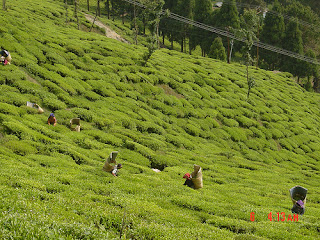



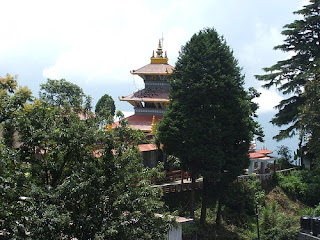
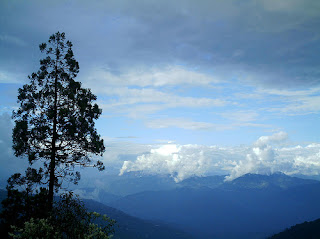
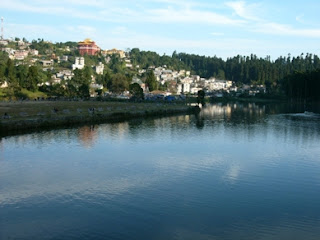




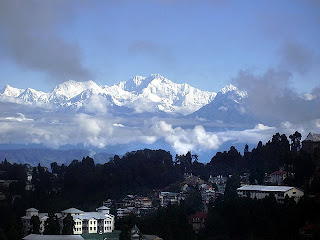

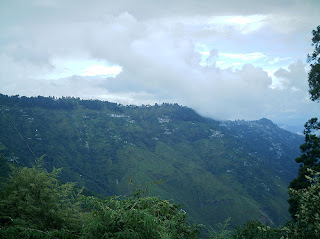
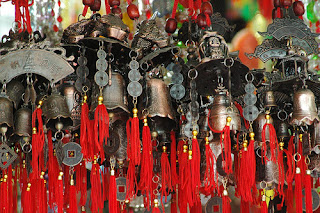
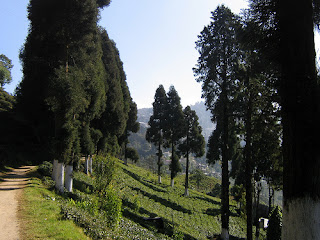
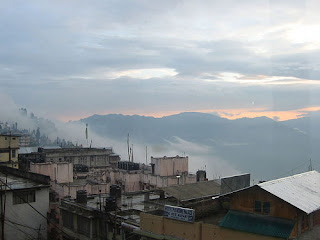

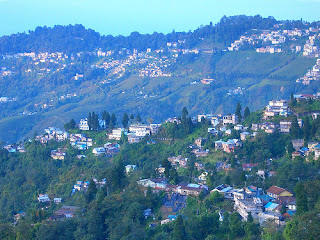

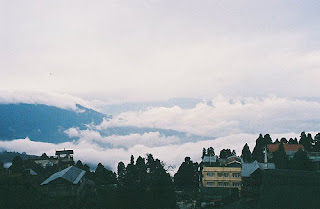

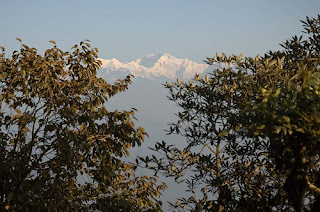
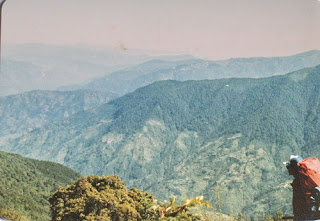

No comments:
Post a Comment